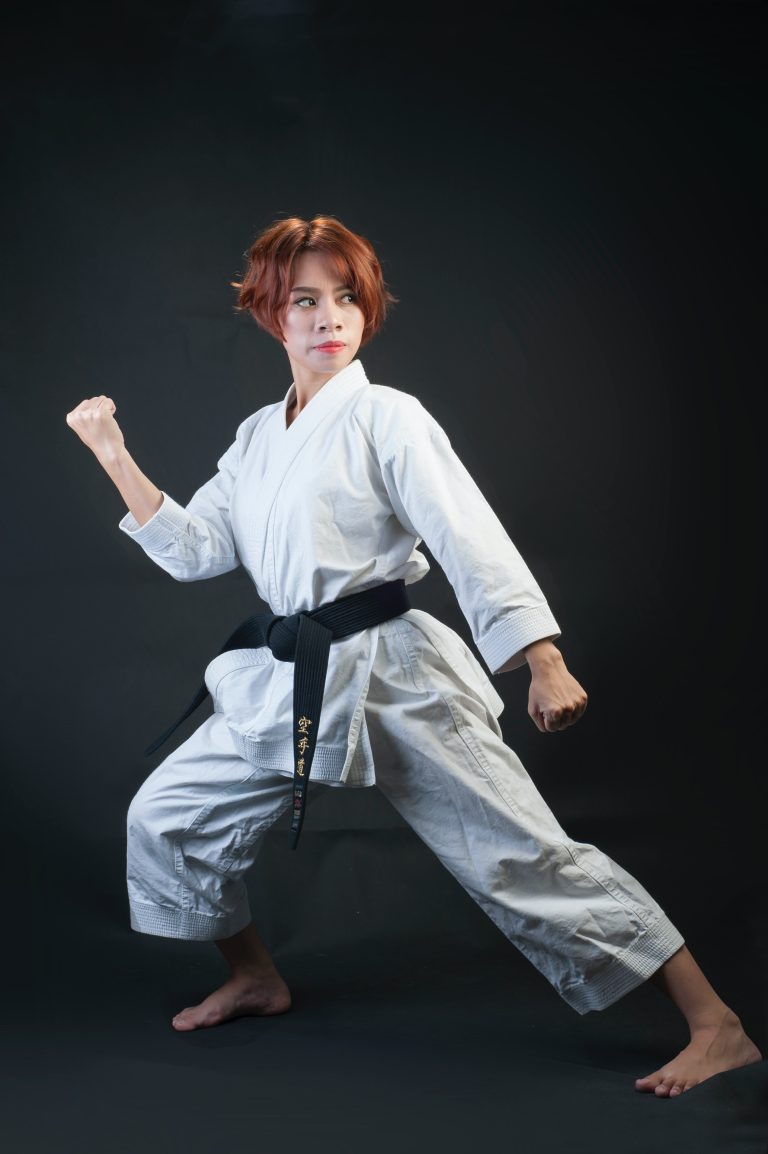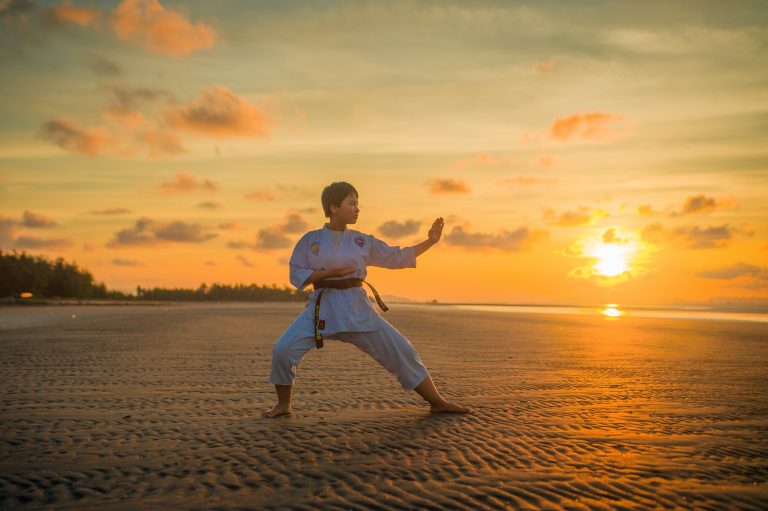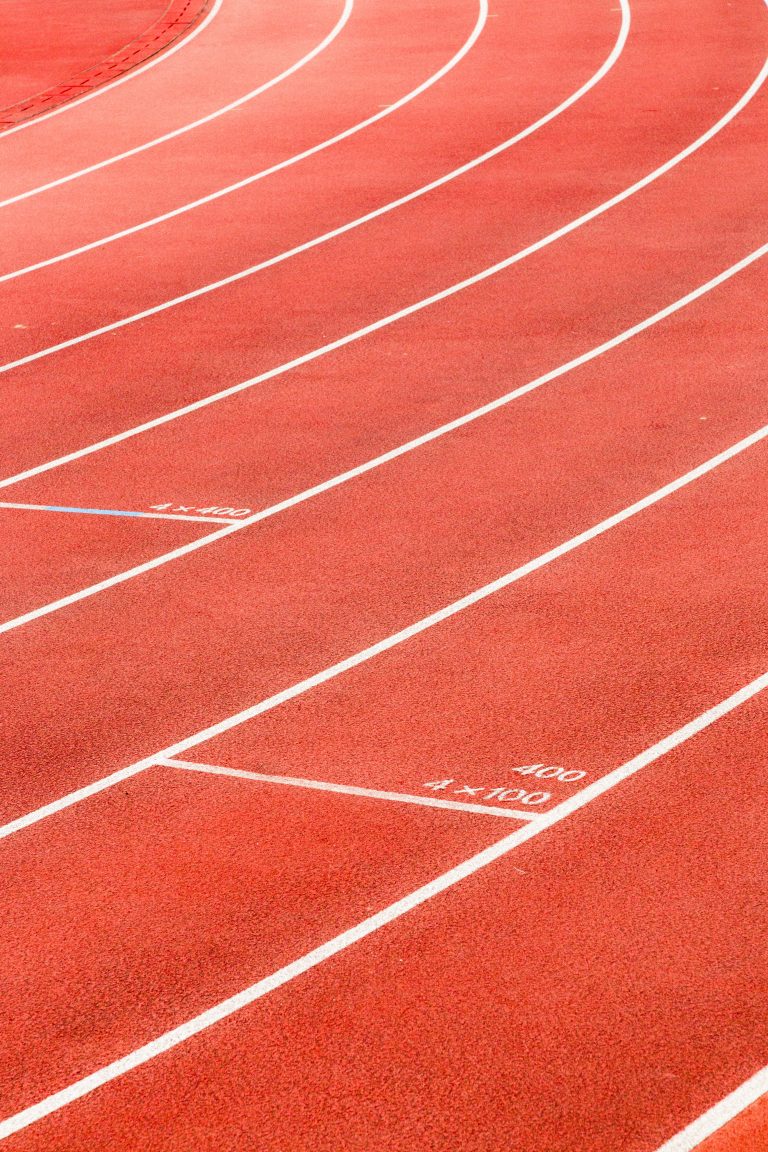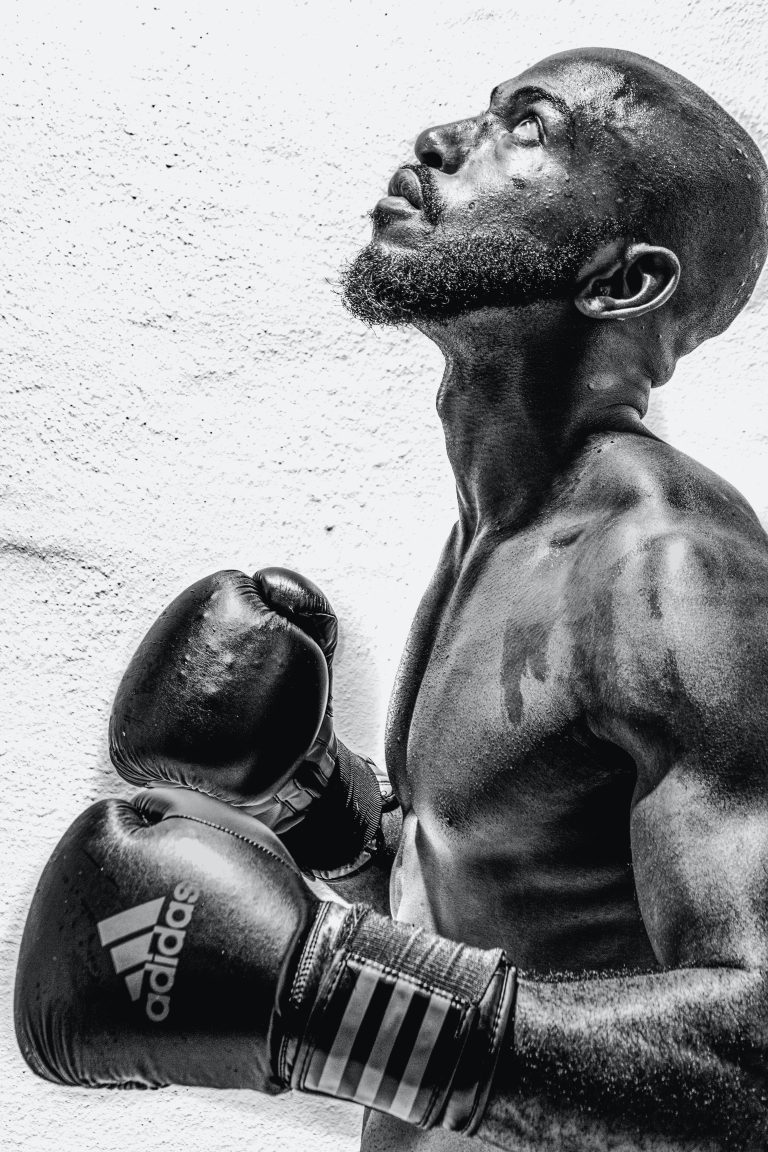Liste der Karate-Schläge
Karate ist eine Kampfkunst, die sowohl Tritte als auch Schläge beinhaltet. In diesem Artikel werden wir uns auf die verschiedenen Arten von Karateschlägen konzentrieren. Von grundlegenden Schlägen bis hin zu fortgeschritteneren Techniken, hier ist eine Liste der Karateschläge:
Choku-Zuki
Der Choku-Zuki ist ein gerader Schlag mit der Faust. Es ist einer der grundlegendsten Schläge im Karate und wird oft zu Beginn des Trainings geübt. Der Arm wird gestreckt und die Bewegung sollte aus dem gesamten Körper kommen.
Gyaku-Zuki
Der Gyaku-Zuki ist ähnlich wie der Choku-Zuki, aber der Schlag wird mit der gegenüberliegenden Hand ausgeführt. Zum Beispiel, wenn der rechte Arm gestreckt wird, wird der linke Arm für den Schlag verwendet. Dieser Schlag wird hauptsächlich in Kombinationen verwendet.
Kizami-Zuki
Der Kizami-Zuki ist ein schneller Schlag mit der Faust, der von der Schulter getrieben wird. Der Schlag wird mit der vorderen Hand ausgeführt und ist eine schnelle Bewegung, die in schnellen Kombinationen verwendet werden kann.
Uraken-Uchi
Der Uraken-Uchi ist ein Schlag mit dem rückseitigen Teil der Faust. Der Schlag wird von hinten ausgeführt und kann in Kombinationen verwendet werden. Die Bewegung sollte schnell und flüssig sein.
Tate-Zuki
Der Tate-Zuki ist ein Schlag mit der Faust von unten nach oben. Der Schlag wird normalerweise als Überraschungsschlag verwendet und kann in Kombinationen oder als Einzelschlag ausgeführt werden.
Mawashi-Zuki
Der Mawashi-Zuki ist ein Schlag mit der Faust, der in einem Rundschlag ausgeführt wird. Der Schlag ist ein fortgeschrittener Schlag und erfordert viel Übung, um richtig ausgeführt zu werden. Es ist ein wirkungsvoller Schlag, der in Kombinationen verwendet werden kann.
Shuto-Uchi
Der Shuto-Uchi ist ein Schlag mit der Handkante. Der Schlag wird normalerweise auf die Seite des Halses oder in die Brust des Gegners ausgeführt und kann in Kombinationen oder als Einzelschlag verwendet werden.
Tetsui-Uchi
Der Tetsui-Uchi ist ein Schlag mit dem Vorderarm. Der Schlag wird normalerweise auf den Kopf oder auf andere empfindliche Stellen des Gegners ausgeführt. Es ist ein kraftvoller Schlag, der in Kombinationen oder als Einzelschlag verwendet werden kann.
Empi-Uchi
Empi-Uchi ist ein Schlag mit dem Ellbogen. Der Schlag wird normalerweise auf den Kopf oder auf andere empfindliche Stellen des Gegners ausgeführt. Es ist ein sehr kraftvoller Schlag, der jedoch schwer auszuführen ist und viel Übung erfordert.
Ura-Zuki
Der Ura-Zuki ist ein Schlag mit der rückwärtigen Faust. Der Schlag wird normalerweise auf den Solarplexus des Gegners ausgeführt und kann als Überraschungsschlag verwendet werden.
Das sind einige der grundlegenden Karateschläge, die du kennen solltest. Wie bei allen Karatetechniken erfordern diese Schläge Zeit und Übung, um sie richtig auszuführen und effektiv im Kampf einzusetzen. Mit kontinuierlichem Training und harter Arbeit kannst du deine Karateschläge verbessern.
FAQs on Liste der Karate-Schläge
Karate is known for its powerful striking techniques that are used for self-defense and in competitions. Liste der Karate-Schläge translates to a list of Karate strikes in English. The list comprises various striking techniques, each with unique forms and applications.
For beginners in Karate, it’s common to have a lot of questions about the Liste der Karate-Schläge, such as which ones to learn first, what they are used for, and how they are executed correctly. In this blog post, we’ll answer some of the most frequently asked questions about the Liste der Karate-Schläge.
1. What is the Liste der Karate-Schläge?
The Liste der Karate-Schläge is a comprehensive list of all the recognized striking techniques used in Karate. It’s an essential part of Karate training, and students must learn various techniques to become proficient in the martial art.
2. How many Karate strikes are there on the list?
The number of Karate strikes on the list varies depending on the Karate style being taught. However, most Karate styles recognize and teach around 20-30 essential strikes, including punches, elbows, kicks, and knee strikes.
3. What are the basic Karate strikes?
The basic Karate strikes include:
- Punches: A straight punch or a cross punch is one of the most common techniques in Karate. The punch is executed by rotating the shoulder and driving the arm forward with the fist.
- Front kick: The front kick is an essential technique in Karate. It involves raising the knee and extending the leg forward to strike the opponent with the ball of the foot.
- Roundhouse kick: The roundhouse kick is another fundamental technique in Karate. It’s executed by pivoting on the supporting foot and swinging the other leg around to strike the target with the shin or foot.
- Side thrust kick: The side thrust kick is performed by raising the knee and driving the heel of the foot into the target’s midsection or thigh.
- Elbow strikes: Elbow strikes are a powerful technique in Karate. The elbow can be used to strike targets in various directions and with different striking surfaces, such as the bony point, the forearm, or the joint.
4. What are the advanced Karate strikes?
Advanced Karate strikes include:
- Backfist: The backfist is a powerful technique in Karate that can be used to strike the opponent with the back of the hand.
- Spinning backfist: This technique involves turning the body 180 degrees and striking the target with the back of the fist.
- Uppercut: The uppercut is executed by punching the opponent from below, using an upward motion to strike the chin or solar plexus.
- Jumping roundhouse kick: This advanced technique involves jumping into the air and striking the target with a roundhouse kick before landing on the ground.
5. How do you execute Karate strikes correctly?
Executing Karate strikes correctly requires good technique and proper form. The following tips can help you execute Karate strikes correctly:
- Stance: Maintaining a stable and balanced stance is crucial for executing Karate strikes. Your feet should be shoulder-width apart, and your knees slightly bent.
- Body alignment: Your body should remain aligned when executing Karate strikes. Keep your shoulders level and facing the target.
- Hand position: Your hands should be up and ready to strike when necessary. For punches, the fist should be tight, and the thumb placed outside the fingers.
- Breathing: Correct breathing is crucial for executing Karate strikes. Exhale forcefully when you strike to increase the power of the technique.
6. Which Karate strikes should I learn first?
For beginners in Karate, it’s recommended to start with the basic strikes like punches and kicks, and gradually move to more advanced techniques. This approach allows students to master the fundamental techniques before progressing to more complex movements.
7. Can Karate strikes be used in self-defense?
Yes, Karate strikes are effective for self-defense. Karate is a martial art that emphasizes self-defense and teaches techniques that can be used to defend oneself in dangerous situations. However, it’s important to remember that Karate strikes should only be used as a last resort and in self-defense situations.
Conclusion
Learning the Liste der Karate-Schläge is an essential part of Karate training. Understanding the different techniques and their proper execution is crucial for becoming proficient in the martial art. By knowing the answers to these frequently asked questions, you can improve your knowledge and understanding of the Karate strikes and become a more skilled practitioner.
Inhaltsverzeichnis






